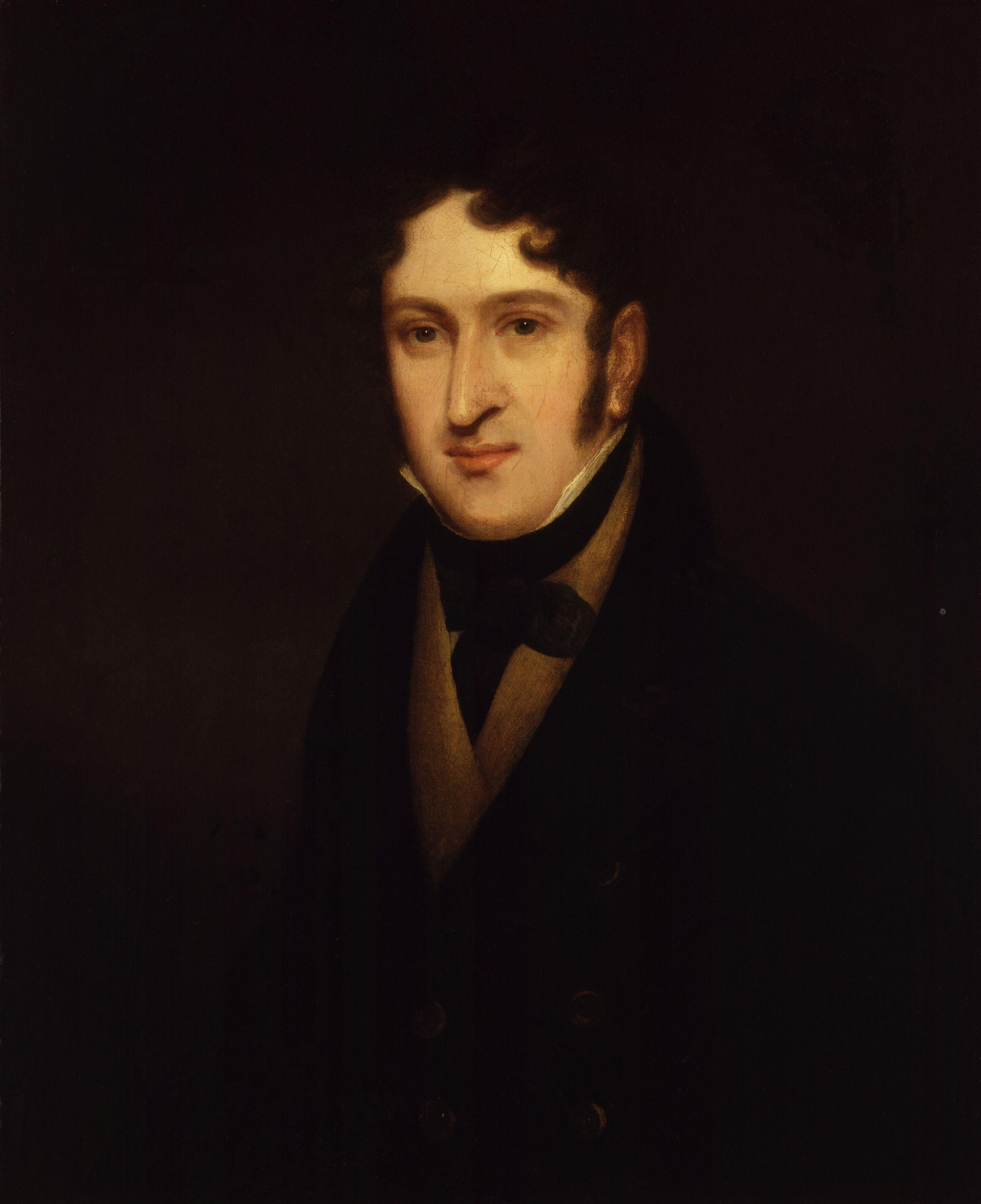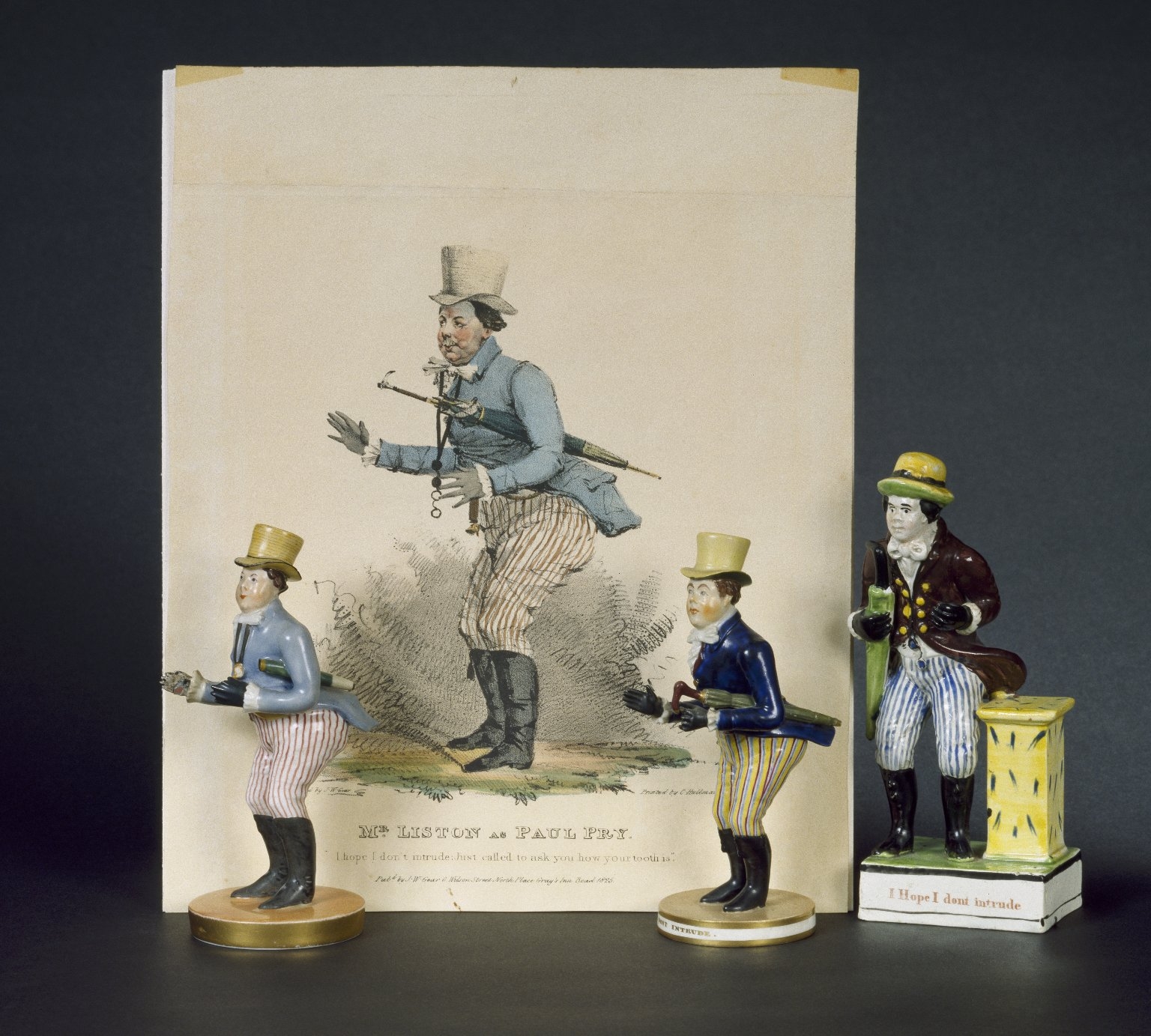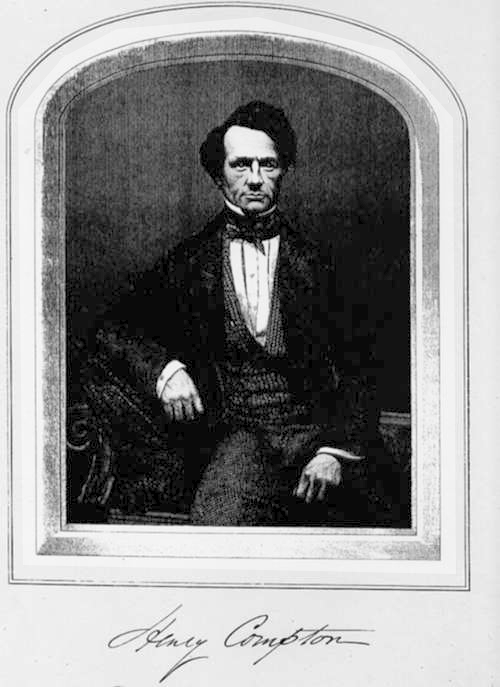|
Joseph Lunn
Joseph Lunn (9 April 1784 – 12 December 1863) was an English dramatist, mostly of comedies and farces. Many of them were produced at the Haymarket Theatre in London. Life Lunn was born in Woolwich in 1784, son of William Lunn and his wife Mary. He was an original member of the Dramatic Authors' Society. He lived for some time in Craven Street, London. He died at Grand Parade, Brighton, on 12 December 1863, aged 79. Family He married in 1815 Elizabeth Wallbridge, and they had two sons Their elder son, William Arthur Brown Lunn, under the pseudonym Arthur Wallbridge, wrote several humorous works. He also invented in 1843 a "sequential keyboard". Works Lunn's earliest work, ''The Sorrows of Werther'', a burlesque, with music by Henry Bishop, was produced at Covent Garden in May 1818, with John Liston and his wife in the chief parts. It was revived at St James's Theatre in October 1836, but apparently remained unpublished. Liston achieved more conspicuous success in four pieces ... [...More Info...] [...Related Items...] OR: [Wikipedia] [Google] [Baidu] |
Haymarket Theatre
The Theatre Royal Haymarket (also known as Haymarket Theatre or the Little Theatre) is a West End theatre on Haymarket in the City of Westminster which dates back to 1720, making it the third-oldest London playhouse still in use. Samuel Foote acquired the lease in 1747, and in 1766 he gained a royal patent to play legitimate drama (meaning spoken drama, as opposed to opera, concerts or plays with music) in the summer months. The original building was a little further north in the same street. It has been at its current location since 1821, when it was redesigned by John Nash. It is a Grade I listed building, with a seating capacity of 888. The freehold of the theatre is owned by the Crown Estate. The Haymarket has been the site of a significant innovation in theatre. In 1873, it was the venue for the first scheduled matinée performance, establishing a custom soon followed in theatres everywhere. Its managers have included Benjamin Nottingham Webster, John Baldwin Buckstone, S ... [...More Info...] [...Related Items...] OR: [Wikipedia] [Google] [Baidu] |
Woolwich
Woolwich () is a district in southeast London, England, within the Royal Borough of Greenwich. The district's location on the River Thames led to its status as an important naval, military and industrial area; a role that was maintained throughout the 16th to 20th centuries. After several decades of economic hardship and social deprivation, the area now has several large-scale urban renewal projects. Geography Woolwich is situated from Charing Cross. It has a long frontage to the south bank of the Thames river. From the riverside it rises up quickly along the northern slopes of Shooter's Hill towards the common, at and the ancient London–Dover Road, at . The ancient parish of Woolwich, more or less the present-day wards Woolwich Riverside and Woolwich Common, comprises . This included North Woolwich, which is now part of the London Borough of Newham. The ancient parishes of Plumstead and Eltham became part of the civil parish of Woolwich in 1930. Parts of the wards ... [...More Info...] [...Related Items...] OR: [Wikipedia] [Google] [Baidu] |
Brighton
Brighton () is a seaside resort and one of the two main areas of the City of Brighton and Hove in the county of East Sussex, England. It is located south of London. Archaeological evidence of settlement in the area dates back to the Bronze Age, Roman and Anglo-Saxon periods. The ancient settlement of "Brighthelmstone" was documented in the ''Domesday Book'' (1086). The town's importance grew in the Middle Ages as the Old Town developed, but it languished in the early modern period, affected by foreign attacks, storms, a suffering economy and a declining population. Brighton began to attract more visitors following improved road transport to London and becoming a boarding point for boats travelling to France. The town also developed in popularity as a health resort for sea bathing as a purported cure for illnesses. In the Georgian era, Brighton developed as a highly fashionable seaside resort, encouraged by the patronage of the Prince Regent, later King George IV, who spent ... [...More Info...] [...Related Items...] OR: [Wikipedia] [Google] [Baidu] |
Henry Bishop (composer)
Sir Henry Rowley Bishop (18 November 178730 April 1855) was an English composer from the early Romantic era. He is most famous for the songs "Home! Sweet Home!" and "Lo! Hear the Gentle Lark." He was the composer or arranger of some 120 dramatic works, including 80 operas, light operas, cantatas, and ballets. Bishop was Knighted in 1842. Bishop worked for all the major theatres of London in his era – including the Royal Opera House at Covent Garden, the Theatre Royal, Drury Lane, Vauxhall Gardens and the Haymarket Theatre, and was Professor of Music at the universities of Edinburgh and Oxford. His second wife was the noted soprano Anna Bishop, who scandalised British society by leaving him and conducting an open liaison with the harpist Nicolas-Charles Bochsa until the latter's death in Sydney. Life Bishop was born in London, where his father was a watchmaker and haberdasher. At the age of 13, Bishop left full-time education and worked as a music-publisher with his cousin. ... [...More Info...] [...Related Items...] OR: [Wikipedia] [Google] [Baidu] |
Royal Opera House
The Royal Opera House (ROH) is an opera house and major performing arts venue in Covent Garden, central London. The large building is often referred to as simply Covent Garden, after a previous use of the site. It is the home of The Royal Opera, The Royal Ballet, and the Orchestra of the Royal Opera House. The first theatre on the site, the Theatre Royal (1732), served primarily as a playhouse for the first hundred years of its history. In 1734, the first ballet was presented. A year later, the first season of operas, by George Frideric Handel, began. Many of his operas and oratorios were specifically written for Covent Garden and had their premieres there. The current building is the third theatre on the site, following disastrous fires in 1808 and 1856 to previous buildings. The façade, foyer, and auditorium date from 1858, but almost every other element of the present complex dates from an extensive reconstruction in the 1990s. The main auditorium seats 2,256 people, mak ... [...More Info...] [...Related Items...] OR: [Wikipedia] [Google] [Baidu] |
John Liston
John Liston (c. 1776 – 22 March 1846), English comedian, was born in London. He made his public debut on the stage at Weymouth as Lord Duberley in ''The Heir at Law''. After several dismal failures in tragic parts, some of them in support of Mrs Siddons, he discovered accidentally that his forte was comedy, especially in the personation of old men and country boys, in which he displayed a fund of drollery and broad humour. An introduction to Charles Kemble led to his appearance at the Haymarket on 10 June 1805 as Sheepface in the ''Village Lawyer'', and his association with this theatre continued with few interruptions until 1830. '' Paul Pry'', the most famous of all his impersonations, was first presented on 13 September 1825 and soon became, thanks to his creative genius, a real personage. Liston remained on the stage until 1837; during his last years his mind failed, and he died on 22 March 1846. He had married in 1807 Miss Tyrer (d. 1854), a singer and actress. I ... [...More Info...] [...Related Items...] OR: [Wikipedia] [Google] [Baidu] |
St James's Theatre
The St James's Theatre was in King Street, St James's, London. It opened in 1835 and was demolished in 1957. The theatre was conceived by and built for a popular singer, John Braham; it lost money and after three seasons he retired. A succession of managements over the next forty years also failed to make it a commercial success, and the St James's acquired a reputation as an unlucky theatre. It was not until 1879–1888, under the management of the actors John Hare and Madge and W. H. Kendal that the theatre began to prosper. The Hare-Kendal management was succeeded, after brief and disastrous attempts by other lessees, by that of the actor-manager George Alexander, who was in charge from 1891 until his death in 1918. Under Alexander the house gained a reputation for programming that was adventurous without going too far for the tastes of London society. Among the plays he presented were Oscar Wilde's ''Lady Windermere's Fan'' (1892) and ''The Importance of Being Earn ... [...More Info...] [...Related Items...] OR: [Wikipedia] [Google] [Baidu] |
George Perry (composer)
George Frederick Perry (1793 – 4 March 1862) was a British violinist and organist, and composer of operas and oratorios. He was musical director of the Haymarket Theatre, and later was leader of the orchestra of the Sacred Harmonic Society. Early years Perry was born in Norwich in 1793; his father was a turner and an amateur bass singer who took part in the annual performance of an oratorio at the cathedral, under John Christmas Beckwith. Through Beckwith, Perry became a member of the cathedral choir, and his musical ability was noticed. Perry locally learned violin and piano, also harmony and composition. About 1818 Perry became leader of the orchestra at the Theatre Royal, Norwich, then an institution enjoying a high reputation. Perry wrote an oratorio, ''The Death of Abel'' (text by George Bennett of the Norwich Theatre), which was first performed in Norwich, and afterwards repeated by the Sacred Harmonic Society in 1841 and 1845. Shortly after his appointment to the theatre ... [...More Info...] [...Related Items...] OR: [Wikipedia] [Google] [Baidu] |
Henry Compton (actor)
Henry Compton (real name Charles Mackenzie) (22 March 1805 – 15 September 1877) was an English actor best known for his Shakespearean comic roles. Compton began his career in Shakespeare plays in the British provinces. He then began to specialize in low comedy roles in touring companies, where he played for over a decade. He first appeared in London in 1837 and joined the company at the Theatre Royal, Drury Lane later that year, again playing in Shakespeare. Other notable roles that followed included Tony Lumpkin in ''She Stoops to Conquer'', Gnatbrain in ''Black-Eyed Susan'', Sir Peter Teazle in ''The School for Scandal'' and Foresight in ''Love for Love''. By the early 1840s, Compton had earned the reputation of being the best Shakespearian clown of his age both in London and in the provinces. He performed for three years at the Princess's Theatre, London, famously playing Touchstone in ''As You Like It'' in 1844. He also played at the Olympic Theatre for three years, then t ... [...More Info...] [...Related Items...] OR: [Wikipedia] [Google] [Baidu] |
Lyceum Theatre, London
The Lyceum Theatre ( ) is a West End theatre located in the City of Westminster, on Wellington Street, just off the Strand in central London. It has a seating capacity of 2,100. The origins of the theatre date to 1765. Managed by Samuel Arnold, from 1794 to 1809 the building hosted a variety of entertainments including a circus produced by Philip Astley, a chapel, and the first London exhibition of waxworks by Madame Tussauds. From 1816 to 1830, it served as The English Opera House. After a fire, the house was rebuilt and reopened on 14 July 1834 to a design by Samuel Beazley. The building is unique in that it has a balcony overhanging the dress circle. It was built by the partnership of Peto & Grissell. The theatre then played opera, adaptations of Charles Dickens novels and James Planché's "fairy extravaganzas", among other works. From 1871 to 1902, Henry Irving appeared at the theatre, especially in Shakespeare productions, usually starring opposite Ellen Terry. In 1904 t ... [...More Info...] [...Related Items...] OR: [Wikipedia] [Google] [Baidu] |
John Genest
John Genest (1764–1839) was an English clergyman and theatre historian. Life He was the son of John Genest of Dunker's Hill, Devon. He was educated at Westminster School, entered 9 May 1780 as a pensioner at Trinity College, Cambridge, and graduated B.A. 1784 and M.A. 1787. He took holy orders, and was for many years curate of a Lincolnshire village. Subsequently, he became private chaplain to the Duke of Ancaster Earl of Lindsey is a title in the Peerage of England. It was created in 1626 for the 14th Baron Willoughby de Eresby (see Baron Willoughby de Eresby for earlier history of the family). He was First Lord of the Admiralty from 1635 to 1636 an .... Compelled by ill-health to retire, he went to Bath, Somerset for the benefit of the waters. Here he appears to have remained until his death, which took place, after nine years of illness, at his residence in Henry Street, 15 December 1839. He was buried in St. James's Church. Works During his times in Bath he wrote ... [...More Info...] [...Related Items...] OR: [Wikipedia] [Google] [Baidu] |
Her Majesty's Theatre
Her Majesty's Theatre is a West End theatre situated on Haymarket, London, Haymarket in the City of Westminster, London. The present building was designed by Charles J. Phipps and was constructed in 1897 for actor-manager Herbert Beerbohm Tree, who established the Royal Academy of Dramatic Art at the theatre. In the early decades of the 20th century, Tree produced spectacular productions of William Shakespeare, Shakespeare and other classical works, and the theatre hosted premieres by major playwrights such as George Bernard Shaw, J. M. Synge, Noël Coward and J. B. Priestley. Since the First World War, the wide stage has made the theatre suitable for large-scale musical productions, and the theatre has accordingly specialised in hosting musical theatre, musicals. The theatre has been home to record-setting musical theatre runs, notably the First World War sensation ''Chu Chin Chow''Larkin, Colin (ed). ''Guinness Who's Who of Stage Musicals'' (Guinness Publishing, 1994) and the ... [...More Info...] [...Related Items...] OR: [Wikipedia] [Google] [Baidu] |






.jpg)


